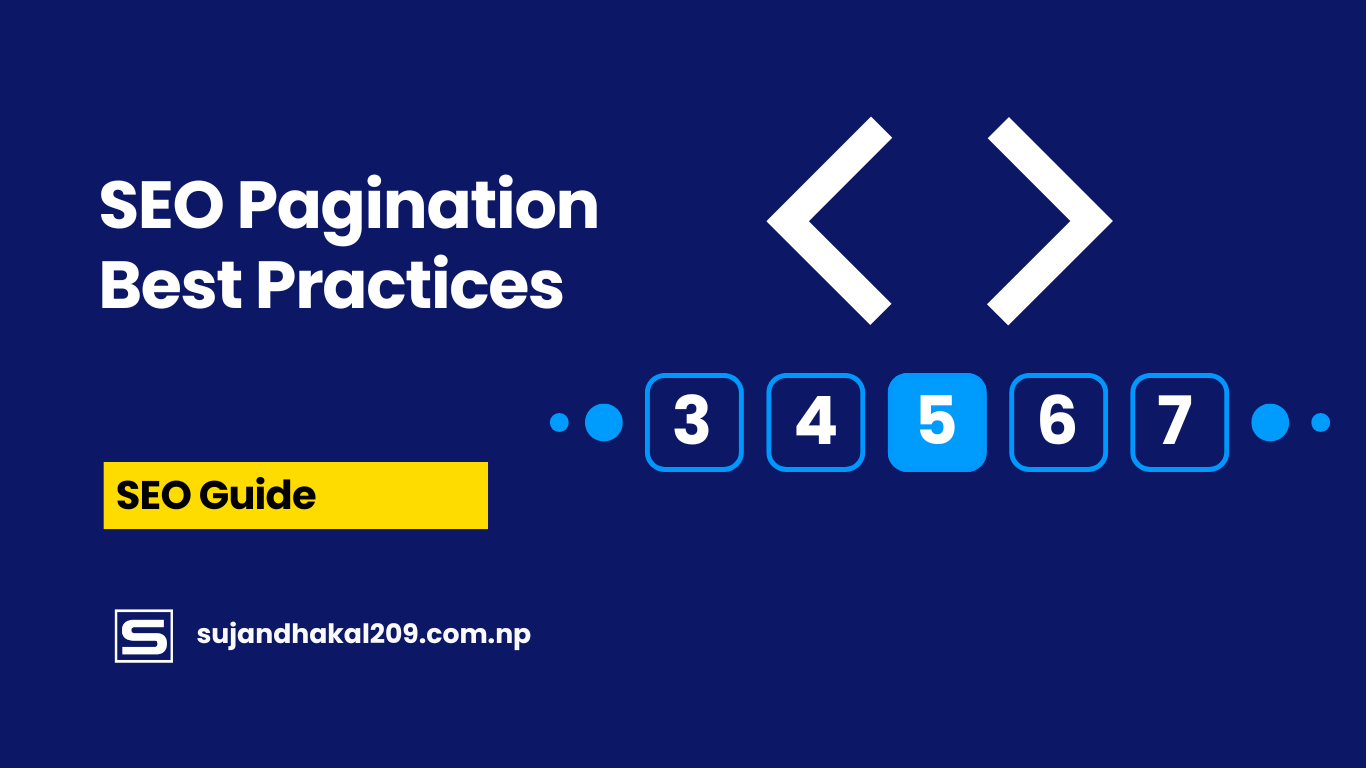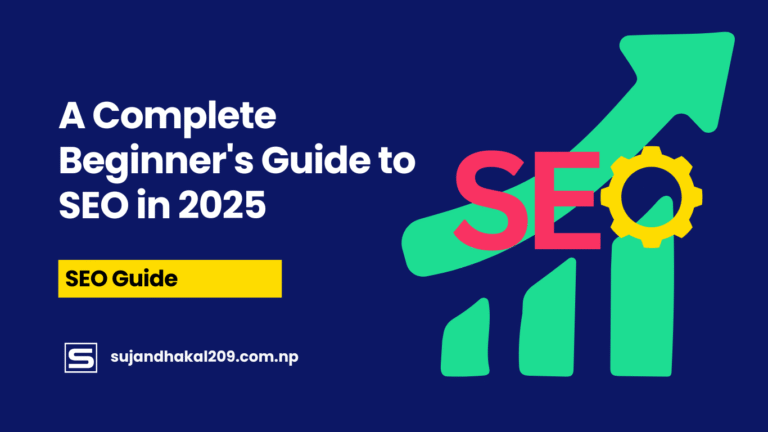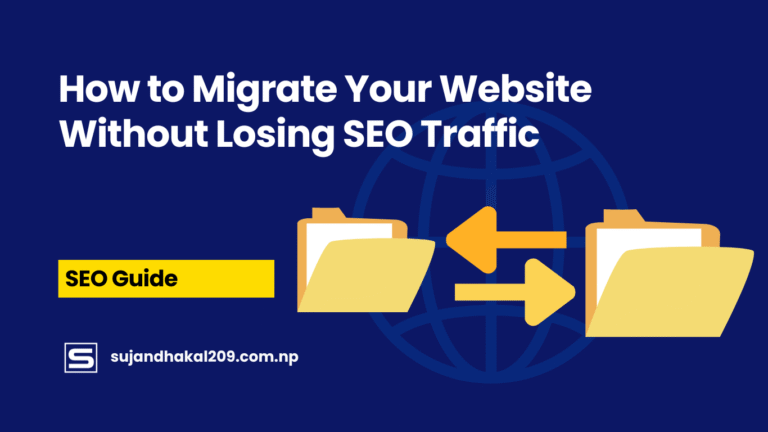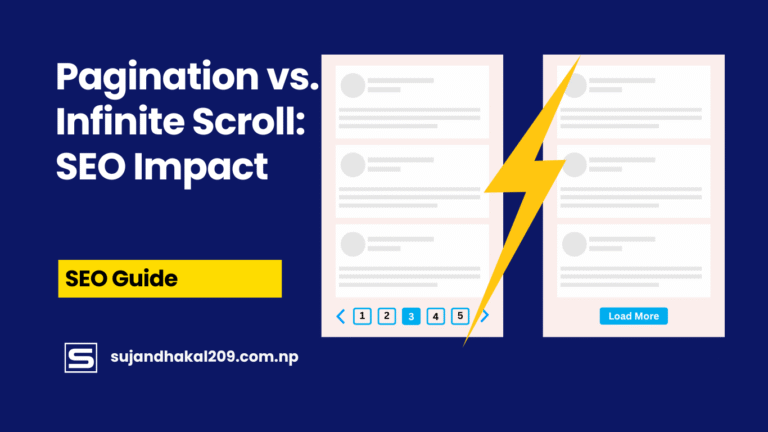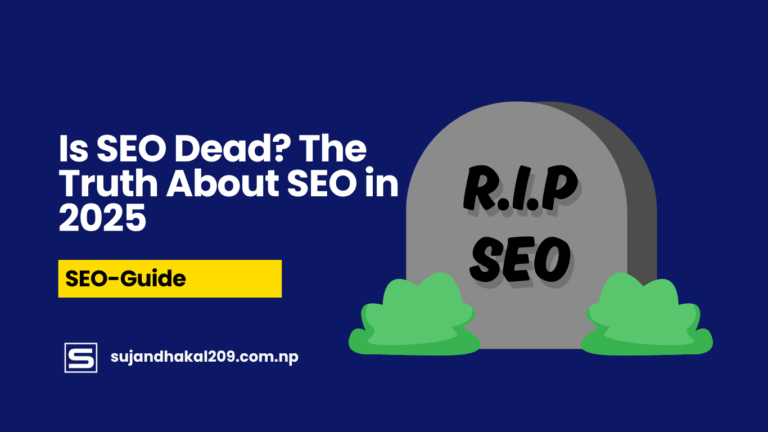SEO Pagination Best Practices
Getting pagination right isn’t just a technical detail—it’s a major SEO move. Whether you’re running a blog, e-commerce site, or content-heavy directory, how you handle paginated content can dramatically impact your organic visibility and user experience. This guide walks you through actionable SEO pagination best practices that help your site stay crawler-friendly, user-focused, and rank-ready.
Introduction to Pagination in SEO
What is Pagination in SEO?
Pagination in SEO refers to the method of breaking up content across multiple pages and allowing users to navigate through them using links like “Next,” “Previous,” or page numbers. It’s commonly used on blog archives, category pages, and e-commerce product listings. When implemented properly, pagination enhances user experience and site performance. When done wrong, it can severely hurt your search engine rankings.
Think about it: if your category has 200 products and you display 20 per page, that’s 10 different URLs Google needs to understand. Each of those URLs has potential for duplicate content, crawl waste, and indexation issues. That’s why handling pagination correctly is more than just making sure your “next” button works—it’s about structuring your site in a way that both users and search engines love.
Why Pagination Matters for Search Engines and Users
From a user’s point of view, pagination helps in navigating content without being overwhelmed. No one wants to scroll through hundreds of items on a single page. For search engines, though, pagination presents a challenge—mainly because of dilution of ranking signals (like backlinks) and content duplication across paginated URLs.
If search engines can’t crawl your pagination structure properly, they may not index the deeper pages. That means your products or blog posts on page 3 or 4 might never see the light of the SERPs. Also, poorly implemented pagination can waste crawl budget—Google might spend its limited time crawling repetitive paginated URLs instead of more important pages.
Common Pagination Methods
Traditional Pagination with Numbered Pages
This is the classic format—users see links like “1 2 3 4 Next,” and each link leads to a new URL. From an SEO perspective, this approach is the most straightforward. Each page has its own URL and can be crawled individually. You can also control the metadata, canonical tags, and internal links for each page.
The challenge here is consistency. Make sure every page links to the next and previous pages to help bots understand the structure. Also, avoid thin content pages. If page 6 only has one or two items while the others have 20, that signals a quality issue.
From a UX perspective, make your page numbers large enough to click easily, especially on mobile. Keep the current page highlighted so users don’t lose track. And always include “First” and “Last” links to give users full control over navigation.
Infinite Scroll and Load More Buttons
Infinite scroll is flashy and modern. Users love it because they can keep browsing without clicking anything. But search engines? Not so much—at least, not unless you go the extra mile. Infinite scroll often relies on JavaScript to load content dynamically, which many search bots still struggle with.
To make infinite scroll SEO-friendly, use progressive enhancement. That means making sure there are also crawlable URLs that search engines can follow, even if the JS fails. Google recommends implementing a paginated series of URLs alongside infinite scroll so that both users and bots get the best of both worlds.
“Load more” buttons fall somewhere in between traditional pagination and infinite scroll. They’re more predictable for bots but still need proper technical implementation. Always include unique URLs when new content loads, and ensure each new state is linkable and indexable.
SEO Challenges with Paginated Content
Duplicate Content Risks
One of the biggest SEO headaches with pagination is duplicate content. If your paginated pages have very similar or identical meta titles and descriptions—or worse, the same content repeated across pages—Google might see them as duplicates. This dilutes your SEO authority and can lead to keyword cannibalization.
Make each page unique. Update meta tags to include page numbers or summaries of the content included. Use canonical tags to tell Google which version of a page is the primary one—more on that later.
Crawl Budget Wastage
Your crawl budget isn’t unlimited. Google allocates a specific amount of time and resources to crawl your site. If it spends all its time crawling 50 paginated URLs that don’t add much SEO value, your more important pages might get ignored.
To mitigate this, use internal linking to direct crawlers to high-value pages. Combine low-value pages if possible. And don’t forget to use analytics to see where crawlers are spending time—it might shock you.
Indexation Problems
Some paginated content never makes it to Google’s index, especially if the bot can’t easily discover those deeper pages. If your pagination is hidden behind JS or poorly linked internally, Googlebot may not even know it exists.
To solve this, ensure each paginated page has:
- A unique, crawlable URL.
- Clear internal links.
- Structured data if applicable.
Google’s Stance on Pagination
The Retirement of rel=prev/next
Back in the day, Google recommended using rel=prev and rel=next to help them understand paginated sequences. In 2019, Google quietly admitted they stopped using this markup years ago, leaving SEOs scrambling for alternatives.
Does that mean pagination is dead? Not at all. It just means we need to focus on other strategies—like crawlable links, internal linking, and proper use of canonical tags—to help Google understand paginated content.
Google’s Recommendations on Modern Pagination
Google’s current advice is simple: treat each paginated page as a standalone valuable page. That means giving it unique content, making it crawlable, and ensuring good internal linking. You should also provide logical site architecture—avoid orphaned paginated pages that aren’t linked anywhere else.
One tip from Google: focus on user experience. If users can easily navigate and find what they need through pagination, Google is more likely to rank those pages well.
Best Practices for SEO-Friendly Pagination
Use Canonical Tags Wisely
Canonical tags are your best friend when it comes to managing paginated series. They help prevent duplicate content by telling search engines which page is the “master” version. However, in pagination, there’s a lot of confusion about how to use them.
Let’s clarify it: don’t set all paginated pages to canonical to page one. That’s an outdated and potentially harmful practice. Instead, each paginated page should canonicalize to itself. Why? Because every paginated URL has unique content—different products, blog posts, or listings—so each page deserves to be indexed and ranked on its own.
This self-referencing canonical approach maintains link equity and ensures Google doesn’t ignore your deeper content. Plus, it’s the current best practice recommended by many SEO experts post the deprecation of rel=prev and rel=next.
Here’s a quick example:
example.com/category?page=1→ canonical:example.com/category?page=1example.com/category?page=2→ canonical:example.com/category?page=2
This tells search engines that each page has value and should be treated as part of the overall content offering.
Improve Internal Linking on Paginated Pages
Internal linking is how search engines crawl and understand your site. When it comes to pagination, internal linking can make or break your SEO. If paginated pages are buried too deep or not linked contextually, Googlebot might skip them entirely.
Here’s what you should do:
- Link back to your main category page from paginated URLs.
- Use numbered pagination with links to at least the next 2-3 pages (and previous ones).
- Include featured or related products/posts on each page that link to other internal pages.
Internal linking strengthens the flow of link equity across your site and improves crawlability. It also helps users find related content faster, reducing bounce rates and improving time on site—two key behavioral signals for SEO.
Optimize Title and Meta Tags for Pagination
Paginated pages should have their own unique title and meta description. Don’t just copy the title tag from page 1 across all pages in the series.
Instead, add page indicators like this:
- Title: “Men’s Running Shoes | Page 2”
- Meta Description: “Browse more top-rated men’s running shoes on page 2. Discover comfort, style, and deals you won’t want to miss.”
This helps users in the SERPs know what to expect. It also avoids duplicate meta issues that could lead to poor rankings or click-through rates.
And don’t stop at page numbers—describe the content on that page if possible. For example, if page 3 features size 12 shoes or a specific brand, mention it in the meta description. This level of detail can dramatically boost relevancy.
Use Descriptive Anchor Text in Pagination Links
Don’t use vague or generic anchor text like “Click here” or just numbers. While numbered pagination is okay, combining it with descriptive context helps both SEO and accessibility.
Example:
- Bad:
<a href="/category?page=3">3</a> - Better:
<a href="/category?page=3">View More Nike Running Shoes – Page 3</a>
This makes it clear to users and search engines what each paginated page contains. And yes, Googlebot pays attention to anchor text—so using relevant keywords helps reinforce the topical authority of your paginated content.
Additionally, ensure the “Next” and “Previous” links are properly marked up. These labels help screen readers and bots understand your site’s structure more effectively.
Handling Infinite Scroll with SEO
Make Content Accessible Without JavaScript
Infinite scroll is visually engaging, but it’s a minefield for SEO if not implemented right. Many developers load content dynamically using JavaScript, which can confuse search engine bots that rely on HTML-rendered content.
To fix this, make your content accessible without JavaScript. That means creating a server-rendered fallback version where paginated pages are accessible via direct URLs. If a bot or user disables JavaScript, they should still be able to see all your content.
Use this two-layer approach:
- JavaScript-powered infinite scroll for users.
- Crawlable paginated links for bots and fallback experiences.
This ensures your content gets indexed and isn’t trapped in JS-limbo.
Provide Crawlable URLs
This is non-negotiable. Every chunk of content on your infinite scroll should be accessible via a unique, crawlable URL. That means every time new content loads, it should be reflected in the URL bar—either as a path (like /page/2) or query parameter (?page=2).
This allows users to:
- Share specific paginated states.
- Bookmark content for later.
- Allow Google to index deeper pages.
Use browser history APIs to push state changes to the URL. It’s a small touch with massive SEO implications.
Use Progressive Enhancement for Better UX
Progressive enhancement means starting with a basic, functional version of your site and adding advanced features (like infinite scroll) for users with modern browsers.
Here’s how it works:
- Serve basic paginated HTML as the default.
- Enhance with JavaScript for infinite scroll.
- Ensure users can toggle or fall back to traditional pagination.
This way, you get the best of both worlds: search engines see crawlable content, and users enjoy a smooth browsing experience.
UX tip: add a footer to indicate the end of the scroll. Also, preload the next set of results before users hit the end of the page—this prevents janky loading and keeps users engaged.
Sitemap and Robots.txt Considerations
Should You Include Paginated Pages in Your Sitemap?
Here’s a common question: should paginated pages go in your XML sitemap? The answer depends on the value of those pages.
If each paginated URL contains unique, high-value content that you want to be indexed, yes, include them. However, if the deeper pages have very similar or low-priority content, you can skip them.
As a rule of thumb:
- Include page 1 of every series by default.
- Include additional pages only if they target long-tail keywords or receive organic traffic.
- Keep your sitemap under 50,000 URLs or 50MB uncompressed for optimal performance.
Use tools like Screaming Frog or Sitebulb to analyze which paginated URLs are already indexed and bring traffic. Base your inclusion decisions on data, not assumptions.
Avoid Blocking Paginated URLs via Robots.txt
Blocking paginated URLs (like ?page=2) in robots.txt is a huge mistake. It prevents Google from crawling those pages, which means they won’t get indexed or pass link equity.
Avoid these common disallows:
Disallow: /*?page=
Disallow: /page/
Instead, allow search engines to crawl paginated URLs but manage how they are indexed using meta robots tags, canonical tags, and structured internal linking.
If your paginated pages are thin or duplicate, consider adding noindex, follow instead. But be very selective—blocking crawl access via robots.txt should be a last resort, not your first move.
Using Structured Data on Paginated Pages
Schema Markup and Pagination Compatibility
Structured data helps search engines understand the content and purpose of a web page. However, pagination can create complications if schema is applied incorrectly. One of the biggest SEO mistakes is either duplicating structured data across paginated pages or failing to use it at all.
Here’s the right approach: tailor schema markup to each individual paginated page. If you’re using Product, Article, or BlogPosting schema on a list view or archive, ensure that each paginated page contains only the items visible on that specific page. Don’t list all 100 items in the JSON-LD on every paginated page—Google will consider it spammy or misleading.
Also, use ItemList schema for category pages. This schema allows you to show a list of items, with each item marked up properly. It makes sense for paginated views, where users browse through several items across multiple pages.
Keep in mind:
- Maintain accurate
positionfields in ItemList schema. - Use breadcrumb schema to help clarify content hierarchy.
- Avoid duplicating product or article schema from the full content page unless that content is actually displayed on the paginated version.
Proper structured data helps your pages earn rich results, enhances indexing, and makes pagination more search-friendly without confusing search engines.
Pagination and Breadcrumbs Structured Data
Breadcrumbs are especially useful on paginated content, and Google loves them for understanding site structure. But pagination throws a wrench into the breadcrumbs schema if not implemented carefully.
Let’s say your breadcrumb for a category page looks like this:
Home > Blog > SEO
On page 2 of that category, don’t add “Page 2” to the breadcrumb schema. Keep the breadcrumb consistent across all paginated pages in the series. You can visually display “Page 2” on the front-end for UX, but the breadcrumb structured data should reflect the logical category or path—not the pagination state.
So, whether it’s /seo?page=1 or /seo?page=5, the breadcrumb schema remains:
"itemListElement": [
{
"@type": "ListItem",
"position": 1,
"name": "Home",
"item": "https://example.com"
},
{
"@type": "ListItem",
"position": 2,
"name": "Blog",
"item": "https://example.com/blog"
},
{
"@type": "ListItem",
"position": 3,
"name": "SEO",
"item": "https://example.com/blog/seo"
}
]
This consistency ensures Google doesn’t get confused and keeps your breadcrumbs clean and effective.
Mobile-First Indexing and Pagination
Responsive Design for Paginated Content
Mobile-first indexing means that Google primarily uses the mobile version of your site for ranking and indexing. If your pagination isn’t optimized for mobile, you risk major visibility losses.
Use a responsive design that adapts pagination controls to smaller screens. Make buttons large enough to tap easily and ensure that “Next” and “Previous” buttons are not too close together (which could lead to accidental clicks).
Avoid hiding pagination on mobile using display: none or JavaScript toggles. If Google can’t access your pagination on mobile, it might not index the full set of paginated pages—especially if your desktop site handles it differently.
Quick mobile pagination tips:
- Use numbered pagination with large clickable areas.
- Test pagination using Google’s Mobile-Friendly Test tool.
- Ensure accessibility for screen readers and mobile users alike.
Responsive pagination helps Googlebot mobile understand your site fully and ensures your users can browse without frustration.
Mobile Pagination Navigation UX Tips
Here’s a truth bomb: poor mobile pagination kills conversions. If users struggle to find products or posts past page one, they’ll bounce—and bounce fast.
Here’s how to keep them hooked:
- Add sticky pagination controls that float as users scroll.
- Use infinite scroll with progressive enhancement, especially for image-heavy or product-focused content.
- Group content smartly—offer filters or sorting options so users don’t need to browse through endless pages.
Always test your mobile pagination on real devices. Tools like BrowserStack or Chrome DevTools mobile view can simulate environments, but nothing beats the real deal.
Measuring SEO Success of Pagination
Tools for Monitoring Crawl Efficiency
After optimizing your pagination, you’ll want to track how well it performs. Begin with Google Search Console’s Coverage and Crawl Stats reports. Look for:
- How often paginated URLs are crawled.
- Whether deeper pages are indexed.
- Any crawling or rendering issues.
Also use tools like:
- Screaming Frog: Check canonical tags, duplicate content, and internal linking across paginated URLs.
- Ahrefs or SEMrush: See which paginated pages rank, get backlinks, or draw traffic.
- Log File Analyzers: Understand how bots actually crawl your paginated structure.
Metrics to monitor:
- Crawl depth
- Indexation rate
- Page load speed for paginated URLs
- Organic traffic to pages beyond page 1
Pagination can only help your SEO if it’s being crawled and indexed correctly. Let the data guide your next move.
Tracking User Behavior Across Pages
Don’t forget about the human side of things. Use tools like Google Analytics or Hotjar to see how users interact with your paginated content.
Ask yourself:
- How far do users scroll?
- Do they make it past page 1 or bounce quickly?
- What’s the conversion rate on pages 2 and beyond?
Create segments in Google Analytics to isolate sessions that interact with paginated URLs. This shows you whether your pagination is enhancing or hurting engagement.
Set up scroll depth tracking and click events for pagination links. A/B test different pagination formats to find what keeps users engaged the longest. Remember: good UX and strong SEO go hand-in-hand.
Case Studies: Real-World Pagination SEO Fixes
E-commerce Pagination Optimization
Let’s look at an online shoe store with 2,000 products across 100 categories. Initially, all paginated pages had canonical links pointing to page 1. The result? Only page 1 of each category ranked, while deeper products remained invisible.
The fix:
- Switched to self-referencing canonicals.
- Added crawlable numbered pagination.
- Optimized meta titles and descriptions for each page.
Within 3 months, organic traffic to paginated pages increased by 42%, and product visibility in search rose significantly.
Key takeaway: Let paginated pages breathe. Don’t suffocate them with outdated practices.
Blog Archive Pagination Strategies
A blog with thousands of SEO articles saw poor indexation for older posts. The problem? Their pagination used JavaScript and lacked internal links.
Fixes included:
- Replacing JS pagination with HTML links.
- Adding related posts in each archive.
- Including pagination URLs in the sitemap selectively.
After implementation, bounce rate dropped by 18%, and average session duration increased by over a minute—proving that good pagination keeps users engaged longer.
Conclusion
SEO pagination isn’t just about slapping a “Next” button at the bottom of the page—it’s a strategic process that, when done right, can dramatically improve your site’s crawlability, user experience, and search visibility. Whether you’re running an e-commerce site with thousands of products or a blog with years of content archives, optimizing pagination can unlock valuable real estate in the search engine results.
We’ve covered a lot: from canonical tags, crawlable URLs, and internal linking to structured data, mobile-first design, and analytics tracking. Each of these elements plays a critical role in how search engines interact with your content and how users navigate it. When pagination is mishandled, it leads to crawl waste, duplicate content issues, and missed ranking opportunities.
What’s the secret to getting it right? Balance. Think about both users and search engines. Implement progressive enhancements like infinite scroll with crawlable fallback URLs. Use self-referencing canonicals, descriptive anchor text, and structured data tailored to each paginated page. Always measure your results using real data—not assumptions.
And most importantly, don’t rely on outdated tactics. Google has moved beyond rel=prev/next, and so should your SEO strategy.
So, whether you’re optimizing for Googlebot or for your loyal readers, remember: pagination isn’t a nuisance. It’s an opportunity—one that, when executed smartly, can elevate your entire content ecosystem.
FAQs About SEO Pagination
1. Should paginated pages be indexed by Google?
Yes—if they offer unique and valuable content. Each paginated page should ideally be self-canonicalized and have relevant, keyword-optimized content. Indexing them helps improve visibility for long-tail keywords and ensures deeper pages aren’t overlooked by search engines.
2. What is the best type of pagination for SEO: numbered, infinite scroll, or “Load More”?
Each has pros and cons:
- Numbered pagination is most SEO-friendly due to crawlability and link structure.
- Infinite scroll offers great UX but requires fallback HTML for SEO.
- Load More buttons can work well if implemented with proper URLs and content rendering.
The best choice depends on your site structure, user behavior, and technical capabilities.
3. How many paginated pages should I allow Google to crawl?
There’s no fixed number, but you should let Google crawl as many as needed to index all valuable content. Use internal links and XML sitemaps to highlight key pages. If later pages have little SEO value, consider limiting crawl frequency via link architecture rather than blocking with robots.txt.
4. Can duplicate content issues arise from pagination?
Yes, especially if every paginated page shares the same meta title, description, or canonical tag pointing to page 1. Always provide unique meta data and use self-referencing canonicals to prevent duplicate content. Also, avoid repeating large blocks of identical content on every page (like intro text or filters).
5. Is it okay to “noindex” paginated pages?
You can—but it’s not usually recommended. Using noindex, follow can help prevent low-value pages from showing in SERPs while still allowing link equity to flow. However, if your paginated content includes high-value items or long-tail content, it’s better to keep them indexed with proper on-page optimization.

